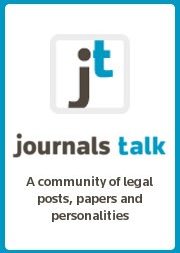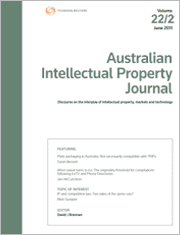Australian Intellectual Property Journal update: Vol 33 Pt 1
By journalalerts on October 19, 2022
Posted In: Australian Intellectual Property Journal (AIPJ) Tagged: Aboriginal Flag AIPJ articles Assignment Deed for Copyright in the Australian Aboriginal Flag Australian Aboriginal Flag Australian Aboriginal Flag artistic work Australian copyright law Australian intellectual property Australian Intellectual Property Journal Australian intellectual property law Australian IP Australian Trade Mark Law blocking of similar trade marks commercial space stations commercialisation of outer space Copyright Act 1968 (Cth) David J Brennan David Lindsay deficiencies of the Australian Patents Act for the protection of space-related technology Dianne Nicol Harold Thomas in-orbit R&D facilities intellectual property law IP Michael Handler New Zealand Supreme Court New Zealand trade mark law New Zealand trade mark statute Patents Act 1990 (Cth) protection for space-related technology public domain recognising zombie marks Robert Burrell section 180 of the Copyright Act 1968 (Cth) space technology space-related technology Stefan Paterson zombie marks zombie trade marks


